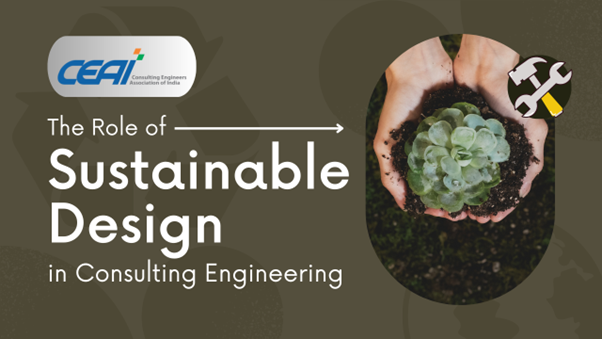
As the world becomes more conscious of the impact of human activities on the environment, sustainable design has become a crucial element of consulting engineering. Sustainable design aims to reduce the negative effects of human activities on the environment by minimising waste, conserving natural resources, and promoting energy efficiency. In this blog post, we’ll explore the role of sustainable design in consulting engineering and how it can help create a more sustainable future.
What is Sustainable Design?
Sustainable design involves considering the entire lifecycle of a product or system and finding ways to minimise its negative impact on the environment. This includes reducing the use of non-renewable resources, such as fossil fuels and minerals, and increasing the use of renewable resources, such as wind, solar, and geothermal energy. Sustainable design also involves minimising waste and pollution by reducing the amount of raw materials needed, reusing materials whenever possible, and recycling materials at the end of their useful life.

Additionally, sustainable design takes into account the social and economic impacts of a product or system. This means considering the well-being of people who use and interact with the product or system, as well as the economic viability of the product or system. For example, sustainable design may involve designing buildings that are energy-efficient, provide healthy indoor environments, and are accessible to all users. It may also involve designing products that are affordable and accessible to a wide range of people, while also reducing their environmental impact.
The Role of Sustainable Design in Consulting Engineering
Consulting engineers play a crucial role in promoting sustainable design. They are responsible for designing and implementing infrastructure and systems that support economic growth, while also minimising their environmental impact. Sustainable design is a key component of this work, as it allows consulting engineers to create solutions that are environmentally responsible and socially beneficial.

By incorporating sustainable design principles into their work, consulting engineers can help to reduce energy consumption and greenhouse gas emissions, as well as minimize the use of non-renewable resources. For example, they may design buildings with high levels of insulation, energy-efficient lighting and HVAC systems, and renewable energy sources such as solar panels or geothermal systems. This not only reduces the environmental impact of the building but also lowers operating costs and provides a healthier indoor environment for occupants.
Consulting engineers may also use sustainable design principles to develop infrastructure systems that reduce the impact of natural disasters and promote environmental resilience. For example, they may design stormwater management systems that reduce the risk of flooding and erosion, or create green spaces and green infrastructure that absorb rainwater and improve air and water quality.
Benefits of Sustainable Design in Consulting Engineering

Sustainable design offers a range of benefits for consulting engineers and their clients. By reducing energy consumption and waste generation, sustainable design can help clients save money on energy and waste disposal costs. It can also improve the overall efficiency and performance of products and systems, leading to higher productivity and improved environmental performance. Additionally, sustainable design can help clients meet regulatory requirements and reduce their carbon footprint, improving their public image and reputation.
Challenges of Sustainable Design in Consulting Engineering

While sustainable design offers numerous benefits, it also presents several challenges for consulting engineers. One of the primary challenges is the need to balance sustainability goals with cost and performance considerations. The sustainable design may require more upfront costs, and clients may hesitate to invest in sustainable solutions if they do not see immediate cost savings. Additionally, implementing sustainable design principles may require significant changes to existing systems and processes, which can be difficult and time-consuming.
Conclusion

Sustainable design is an essential element of consulting engineering in today’s world. By implementing sustainable design principles, consulting engineers can help clients reduce their environmental impact while improving their products and systems’ efficiency and performance. The benefits of sustainable design are numerous, ranging from cost savings to improved environmental performance and reputation. However, sustainable design also presents several challenges that must be carefully considered and addressed. Ultimately, the role of sustainable design in consulting engineering is to create a more sustainable future for us all.
